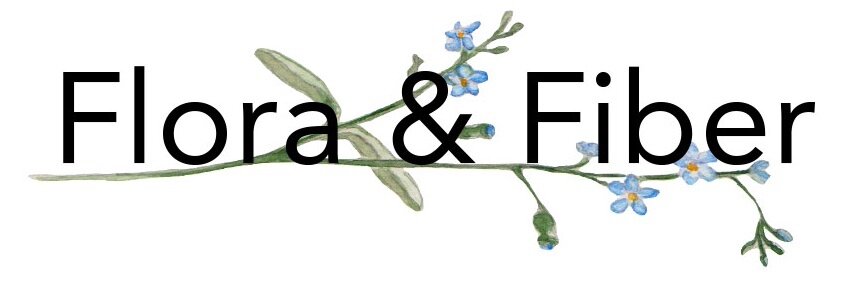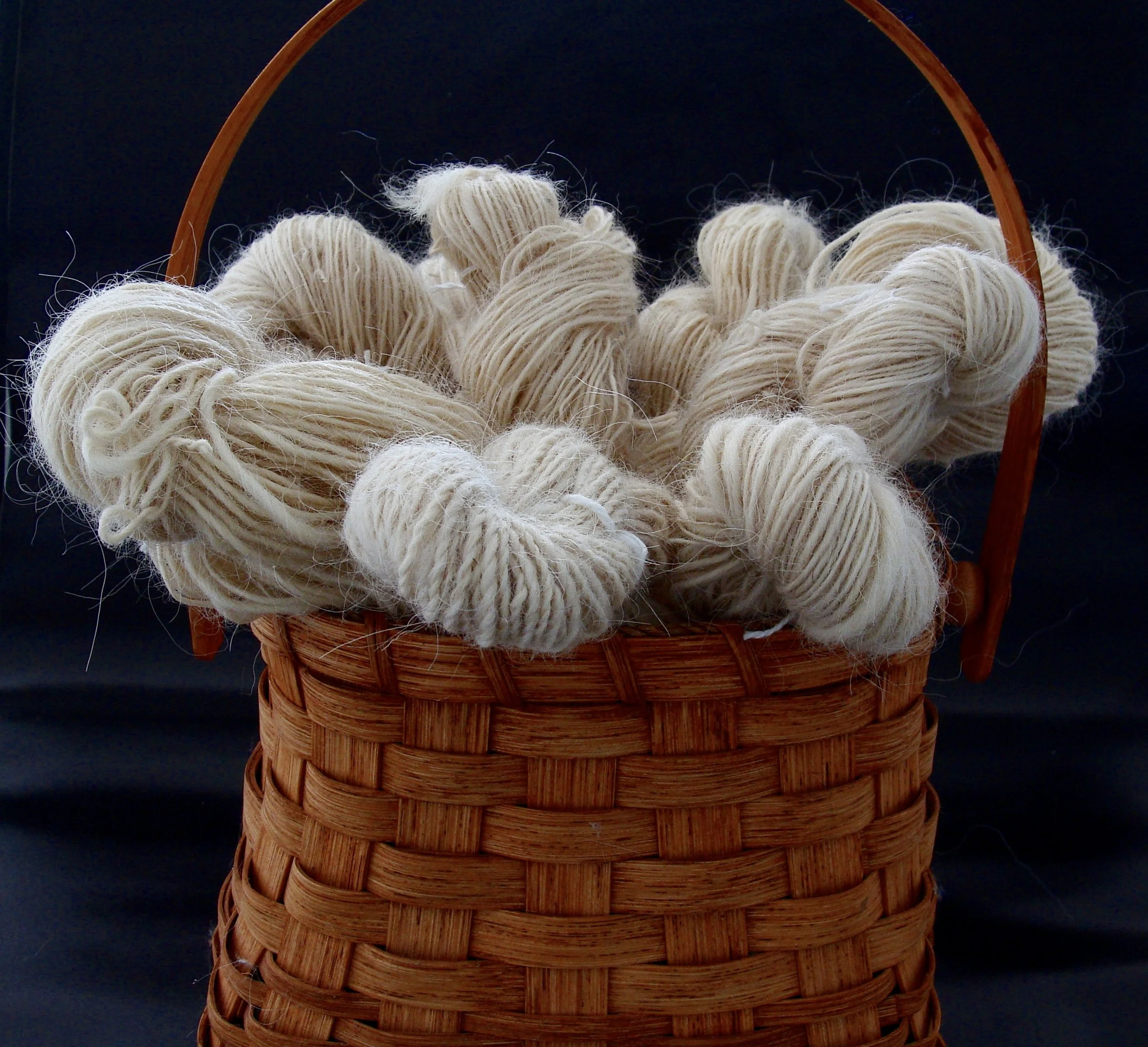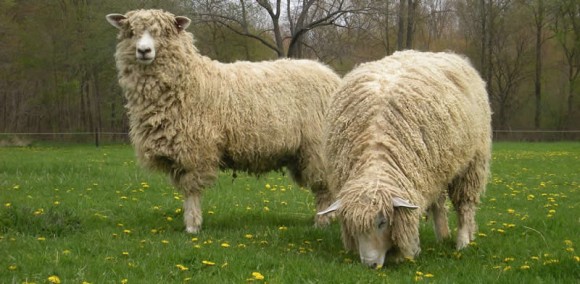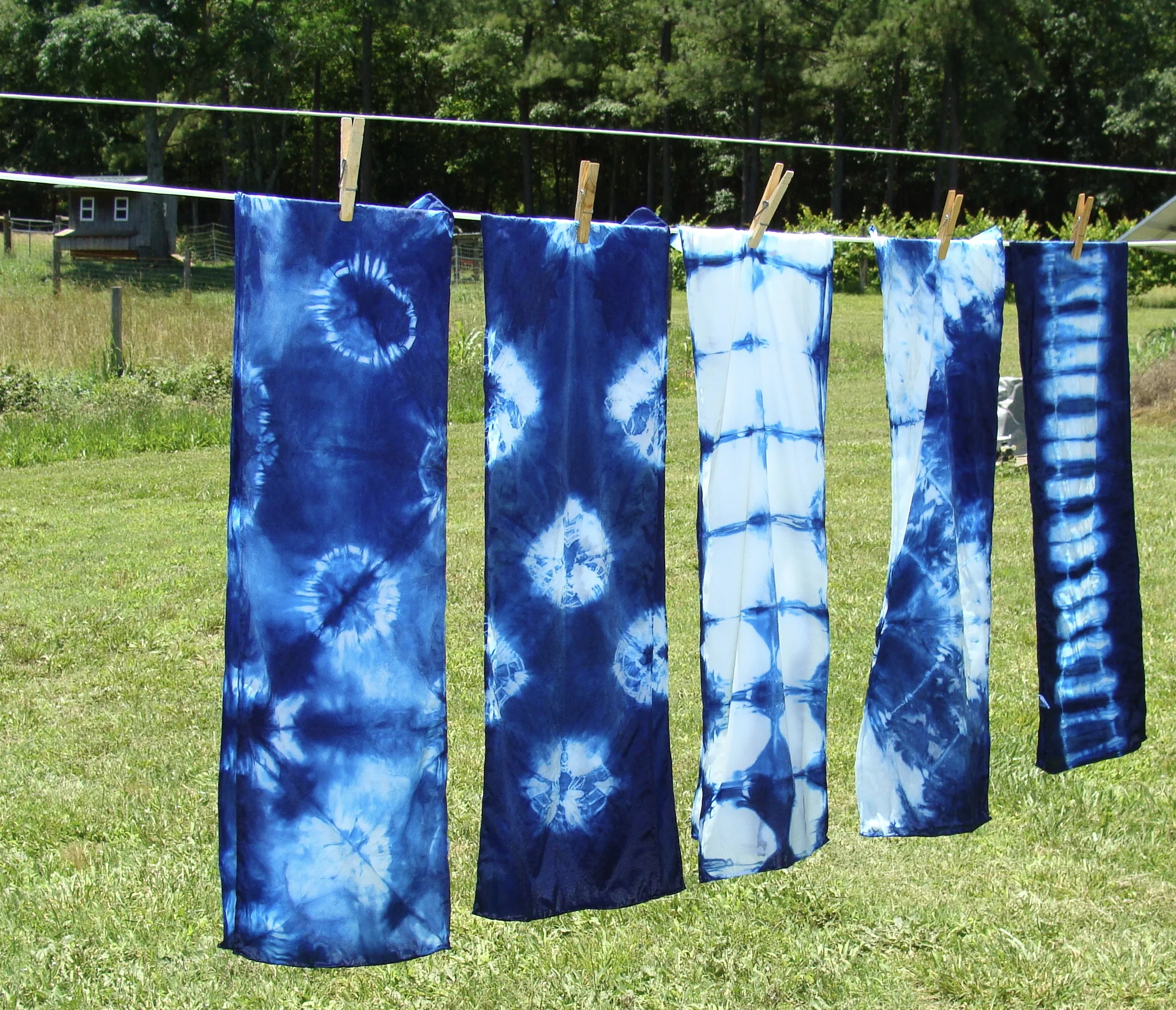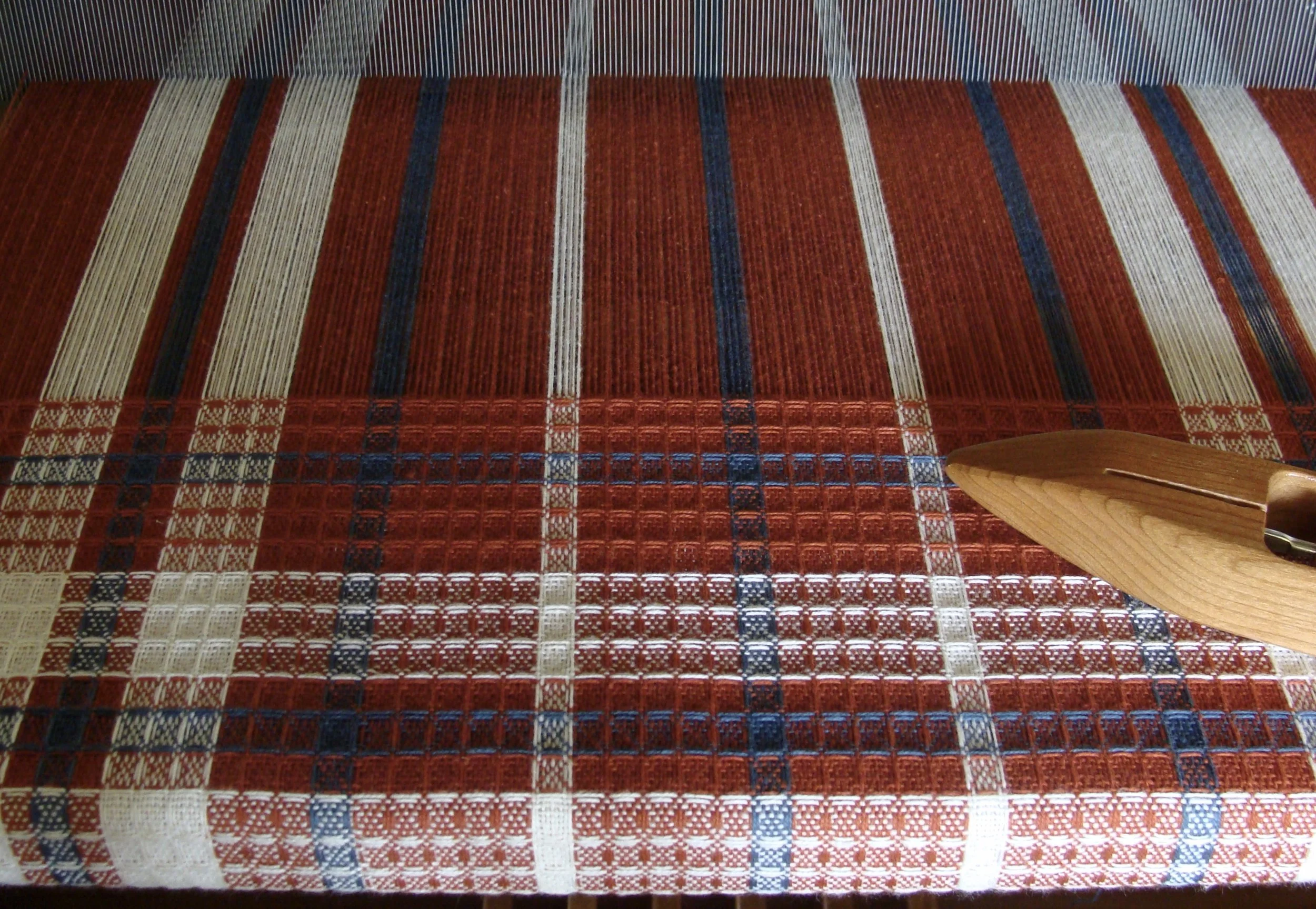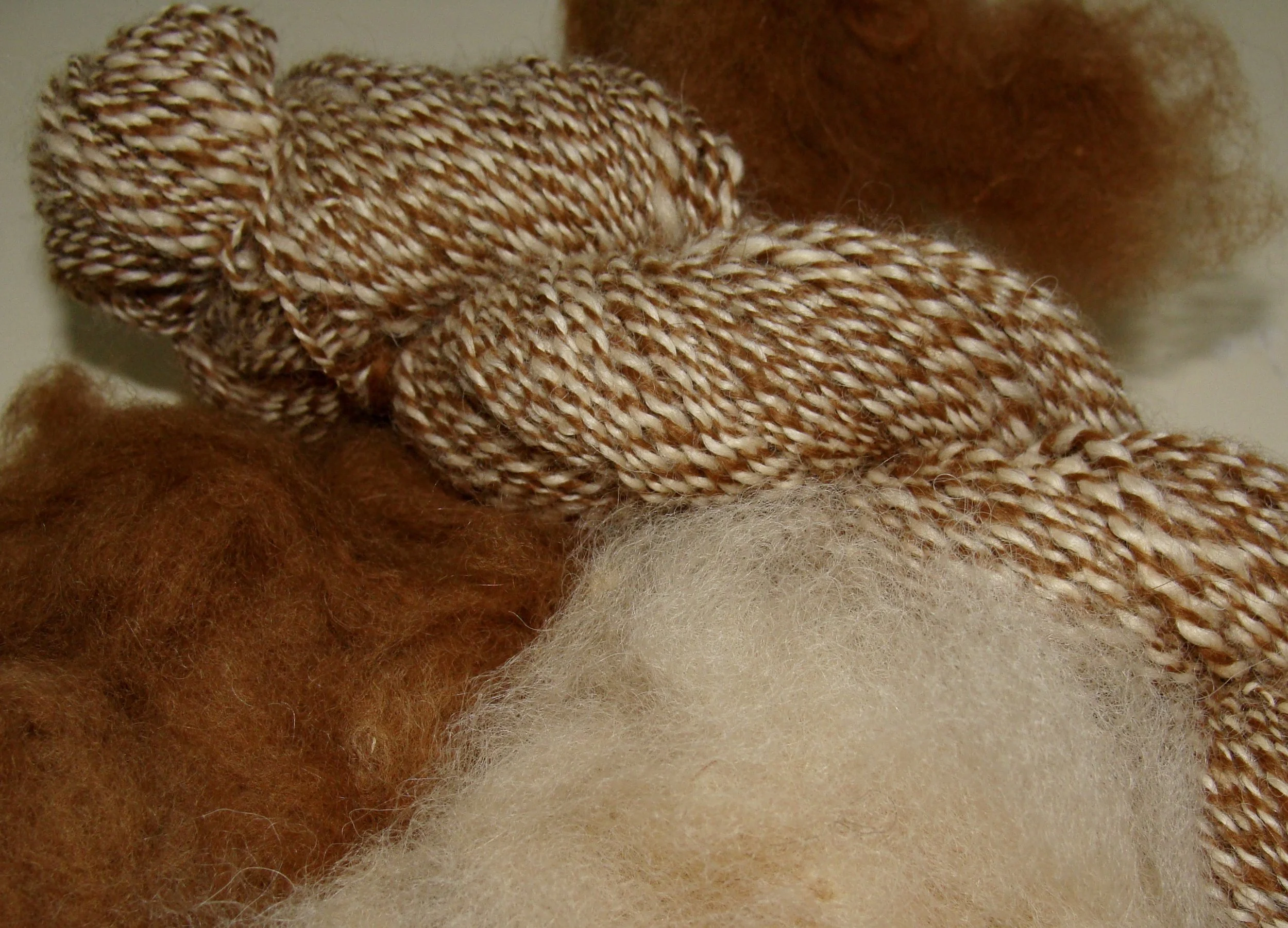Let's Spin . . . Lincoln
The next spin in the 'Let's Spin . . . ' series is Lincoln, sometimes called Lincoln Longwool. The Longwool family includes many of the fiber world's favorite breeds. We have already met another of the longwools, Bluefaced Leicester.
Photo from NLSBA site http://www.lincolnsheep.org
Longwools are a category of sheep, which as the name implies, have a longer staple length, generally greater than 4 inches (10 cm). Additionally, they also display clearly defined crimp. (see this post for fiber characteristic terms).
According to the "The Fleece and Fiber Sourcebook":
Some historians speculate that these breeds descended from a common ancestor brought to "Britannia" by the Romans during the reign of their empire (43-410 CE). The Romans were shepherds from their earliest history, and by the time Pliny the Elder wrote Naturalis Historia (Natural History), around 79 CE, there were already distinct breeds known in Rome. These included both short-wool and long wool varieties, as types suited to lush grazing, sparse hilly areas, and rugged mountains.
Lincoln Longwools are native sheep of Lincolnshire, England. Robert Bakewell, a famous livestock breeder in the 1700s, used the Lincoln with other native stock to create his “new” Leicester sheep. Later, Lincolnshire sheepmen used “new” Leicester rams on “old” coarse-wool Lincoln ewes to begin development of the “improved” Lincoln; the breed we know today. Lincoln sheep have been used extensively for the improvement and/or development of a number of breeds including Corriedale, Polwarth, Columbia, Bond, Armenian Semi-Course Wool, and Panama. From these breeds, second-generation breeds were subsequently developed in the US, such as Montadale and Targhee.
Lincolns are considered to be the largest sheep breed in the British Isles, and likely the world, with rams exceeding 350 pounds (159 kg). Not only are Lincolns physically big, but they have plentiful heavy, long fiber with average fleece weights of 11-16 pounds (5-7.3 kg). I actually found a report of a Lincoln fleece recorded as weighing 46 pounds (21 kg)! Natural colors include white, silvery grays, black, and red-brown.
Lincoln locks are heavy, with defined crimp and often spiraled tips. Staple lengths are generally 7- 15 inches (18-38 cm). Lincolns are often shorn twice a year to obtain more manageable lengths for spinning (3 1/2 to 5 inches). In the previous post on Bluefaced Leicesters (BFL), I noted that even though BFL is a longwool, it is relatively soft and fine (24-28 microns). Lincoln would be on the other end of the longwool spectrum with coarser fiber (33.5-45 microns). Not only do Lincolns have abundant, long fibers, but they are extraordinarily lustrous and hence take color well when dyed.
Sturdiness is one of Lincoln wool's most defining qualities. It does well for hardwearing fabrics such as upholstery, rugs, bags, and bands (leashes and collars). Because of its luster, Lincoln also makes a good wool for tapestry weaving. Lincoln locks are beautiful and can be used directly, without spinning, for dolls' hair.
Although it can be spun directly from the locks, I chose Lincoln Top. The staple length was about 7 inches. I found as I spun I needed to add more twist than I initially thought it would require. At the same time, I was cognizant of not over twisting as I could see how this fiber could easily be "rope-like". I spun on my Louet S-17 wheel at a ratio of 7.5:1 using a worsted short forward draw.
The photo above shows my handspun Lincoln singles just off the bobbin. I was a little concerned about the amount of twist. To finish (or set) the yarn, I soaked in hot water for about 10 minutes, then snapped the yarn firmly, and hung to dry unweighted. As you can see below, the twist really relaxed after this finishing process.
In researching spinning of Lincoln fiber, it was noted it works well for making both smooth and textured yarns. Because of the long staples, the curls can stick out even though the fiber is well secured with twist. You can see the halos in the two photos of finished yarn below.
Lincoln Longwool Single handspun yarn
Lincoln Longwool 2-ply handspun yarn
In the other breed spins I have done so far, I only spun sample amounts of yarn just to study the breed characteristics. This spin I actually have a project in mind and thus spun a total of 18.6 ounces for a total of 1345 yards. Several of our Guild members have embarked on a year long Shaker Rug project. We are using traditional techniques to spin, dye, and weave reproduction Shaker rugs. I plan to do a multi-part series on this project in coming posts.
So the key words for Lincoln Longwool are lustrous, long and strong.
References:
- The Fleece & Fiber Sourcebook - Deborah Robson & Carol Ekarius
- National Lincoln Sheep Breeders Association - http://www.lincolnsheep.org
- Lincoln Longwool by Deborah Robson. Spin-Off magazine, Spring 2012


